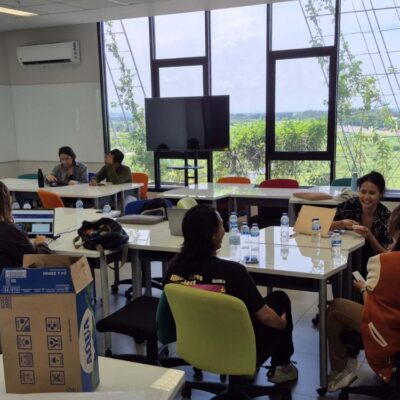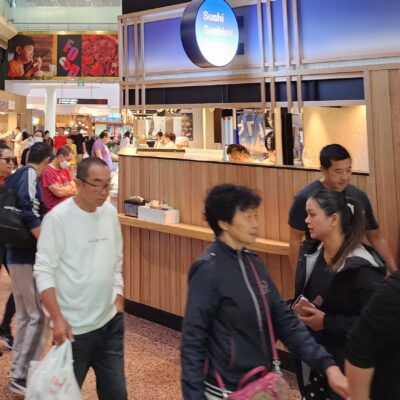The COVID-19 pandemic and growing geo-political and economic tension between Australia and China make Asian Australian Studies increasingly important for achieving diversity and inclusion in all aspects of Australian society and cultures.
In broad terms, Asian Australian Studies focusses on the histories, cultures and politics of people of Asian descent in Australia. It is, therefore, by its nature, a field that deals with a diversity of languages, cultures and customs within the framework of ‘multicultural’ Australia, and has grown with the support of networks such as the Asian Australian Studies Research Network.
Place
According to the 2016 Census, Asian-born Australians accounted for 10.4 percent of the total Australian population. Of all overseas-born people in Australia, the Asian-born population made up 40 percent. The proportion of people born in China and India has noticeably increased since 2011, with China and India becoming the second and third largest groups overtaking New Zealand, according to a 2019 report of the Australian Bureau of Statistics. While England continues to be the source nation of the largest group of overseas-born people living in Australia, the number is dropping.
Asian-born Australians are younger and more educated than other Australians. In 2016, the Asian-born population in Australia had a median age of 35 years, whereas people born in Europe had a median age of 59 years. In terms of education, 79.8 percent of the Indian-born population aged 15 years and over had some form of higher non-school qualification, compared to 60.1 per cent of the general Australian population.
These demographic changes have raised a range of issues for researchers, policy-makers and the Australian community generally that speak to the place, voice and portrayal of Asian Australians. This special edition of the Melbourne Asia Review is dedicated to highlighting various aspects of the lives of Asian Australians, who we categorise broadly as residents in Australia with Asian heritage, including temporary migrants, international students, permanent residents and citizens of Australia.
Voice
Australia’s political institutions have so far failed to reflect significant demographic change, with a notable and continuing under-representation of Asian Australians in federal and state parliaments. This limits the ability of Asian Australians to have their interests and concerns substantively represented in political decision-making processes. The hurdles to election to parliament for Asians in Australia are numerous: among them, limited pathways to citizenship (a criterion for election to parliament) brought about by changes to migration laws over recent decades (Grant Wyeth). Systemic discrimination, which can manifest in a reluctance within political parties to preselect Asian Australian candidates, is another significant hurdle to taking up positions of political leadership (Surjeet Dhanji). However, there is some cause for hope that political parties will see self-interest in change: the 2018 Victorian state election and the 2019 federal election highlighted some emerging opportunities for Chinese and Indian Australians related to the very high concentration of Asian Australian communities in some electorates (Wyeth); and there is action political parties could take, and some are taking, to help close the ‘representation gap’ (Dhanji).
A lack of representation in politics, as well as in business and aspects of social and cultural life is compounded by widespread anti-Asian racism in Australia, particularly against Chinese, or those perceived to be Chinese. While this certainly not new, it has been exacerbated by the outbreak of COVID-19 (Quiping Pan and Jia Gao). Sinophobic media and political discourse have contributed to Australia’s ‘inability’ to fully accept and integrate recent Chinese immigrants.
Racism complicates the already complex relationship between individuals and the state, especially during a pandemic. Asian Australians have perhaps displayed attitudes and behaviours that are more broadly supportive of government public health measures than the general population (Haina Lee and Jay Song), despite being the target of COVID-19 related verbal and physical abuse. Looking to past experience and expertise in relation to pandemics in their countries of origin, Asian Australians have in many ways fully embraced public health policies such as mask-wearing and the adoption of contact tracing measures. There are indications that levels of trust in government remain fairly high, especially in relation to communication of public health messages (Wonsun Shin and Jay Song). Asian Australians are constantly adjusting their expectations and behaviour toward Australian federal and state governments and for both government and individuals, it is a work in progress.
Portrayal
While Asian Australians have in some ways been a highly visible part of Australian life during the pandemic, they remain marginalised in cultural life generally or represented in only highly stereotypical ways. Screen Australia’s 2016 report on diversity in television dramas, notes that ‘(p)eople of non-Anglo-Celtic background were represented in drama programs at just over half the rate that they are present in the population’ and that ‘(p)eople from European backgrounds such as Greek or Italian, and from non-European backgrounds such as Asian, African or Middle Eastern, were significantly under-represented.’ This leads to a form of invisibility where the diversity of the populace is not portrayed on the small screen particularly in soap operas. But there are some positive signs of change (Mridula Chakraborty).
One of the least represented groups in Australia is transnational adoptees. Transnational adoption sits uneasily within accounts of migration as there was no agency on the migrants’ part—mostly infants whose movements were orchestrated by adults and institutions based on a belief in the children’s best interests. Among the ‘quiet migrants’ are South Korean adoptees, the largest cohort of Australian intercountry adoptees who roughly number 3,600, and who are a highly understudied population of Asian Australians (Ryan Gustafsson).
In this special edition, we do not claim to represent all Asian Australians or include in our discussions all of the challenges, but hope that we bring insights from our Asian communities to shed light on their place, voice and portrayal in Australia.
Image: Shoppers in central Melbourne, Australia. Credit: Alpha/Flickr.
This article was originally published with a different image.




